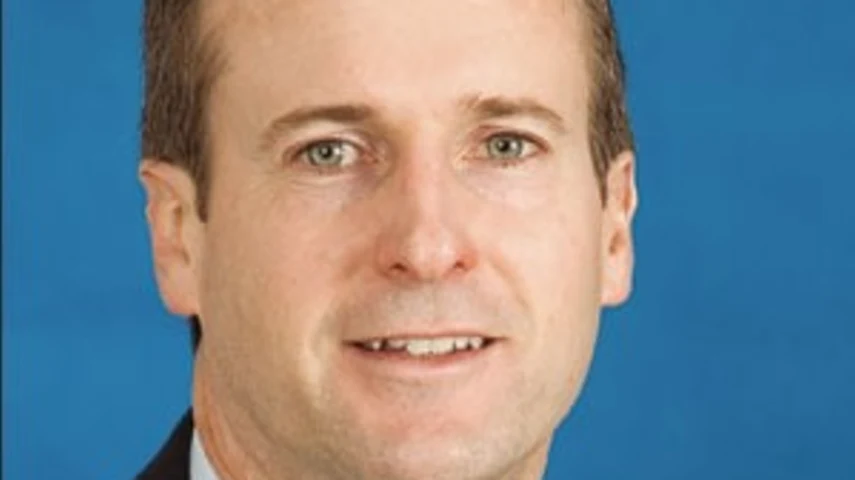What retail investors can expect from managed futures



The increasing acceptance of managed futures is welcome news, but Dominic McCormick believes retail investors should know what to expect.
The one component of the alternative investment universe that has been keenly embraced by retail investors in Australia in recent years has been managed futures. Winton (through Macquarie Bank), AHL, and Aspect (through Colonial First State) have all received strong inflows recently, and according to Morningstar their combined funds under management is now over $1.25 billion.
This excludes guaranteed structured products which, until recently, was the main way retail investors were gaining access to managed futures, particularly through Man Investment’s AHL.
Managed futures funds (or CTAs as they are also known) employ systematic trading programs that usually adopt trend following strategies across a range of financial market variables.
Trends can range from very short-term (intra day to a few days) to longer term (months, even years).
The reasons for the strong take-up by retail investors recently are clear.
Unlike many alternative investments, and given they trade in very liquid markets, managed futures can offer daily liquidity and do not carry the underlying illiquidity risks of some other alternative investments which were highlighted with the problems of fund of hedge funds and certain other strategies in 2008.
In addition, the long-term performance record of the larger managed futures managers is strong and the ability of the funds to go both long and short enables them, under certain circumstances, to produce good returns in rising and falling markets.
As a result, managed futures have often provided good returns when mainstream assets have been poor, such as in 2008 or 2011.
The attached graph showing the performance of a key managed futures index – the Barclays CTA Index - in the months when global sharemarkets (as measured by the MSCI World Index) had their largest negative returns. In the majority of these months the average managed futures fund was positive.
Managed futures have therefore usually offered excellent diversification benefits.
The trend following or (momentum) element that systematic managed futures funds employ has proved to be a valid return factor across most financial markets through history, to the frustration of many efficient market believers.
It has been suggested that this reflects only the gradual incorporation of new information by markets or more simply as the ‘bandwagon’ effects as a range of investors chase performance.
In any case, momentum has been a robust characteristic of most markets over time and the key to the long-term managed futures returns.
We believe that managed futures strategies deserve a solid place in a well diversified investment portfolio and have held them in Select’s own portfolios throughout the last decade.
However, I am becoming concerned that the case for managed futures is sometimes being oversold by some supporters and potentially misunderstood by advisers and investors.
Importantly, given the complex underlying reality of the strategy, incorporating systematic trading across multiple markets and utilising considerable market leverage (typically about six times), there has been a tendency to promote the managed futures story rather simply and with a large focus on past performance (without much guidance on the path of that performance), which risks some disappointment of often lofty expectations.
This is more likely, given that managed futures – and usually just one fund –is the only alternative investment in some client portfolios.
However, these newer managed futures funds and trend following programs certainly don’t come with any guarantees, especially over the short or even medium term.
As with most investment strategies, some surprises along the way are certain. Given the nature of leverage, the funds can be inherently volatile and prone to poor returns over certain periods where trends are lacking.
Negative months of up to 10 per cent or even more are possible.
These are the elements that can frustrate and disappoint many retail investors.
This frustration is accentuated by the fact that the poor returns on managed futures often come at times when other mainstream investments are doing well (although this is the point of diversification).
One major fund experienced a negative return of 21.5 per cent at a time when the Australian S&P ASX 200 Accumulation Index returned positive 27 per cent.
Periods of poor returns can sometimes involve a grinding pattern of mostly small, negative returns over an extended period of days, weeks or months.
One large managed futures fund has experienced a drawdown (ie, period before it returned to previous highs) that lasted almost three and a half years.
As an investor in the area over the past decade, we have felt the high level of frustration that such periods bring.
However, the vast majority of recent retail investors into these funds locally have yet to experience these patterns to a significant degree.
Having said this, a taste of the high day-to-day volatility has been on display recently.
For example, on the last trading day of June 2012, most medium to longer trend following managed futures funds fell between 3.5 per cent and 4.5 per cent on the day.
(Note, this was a day when sharemarkets were up strongly). At the time of writing in mid July, managed futures funds have generally recovered this loss, however it highlights the inherent volatility of which managed futures are capable.
Further, there are some valid concerns as these trend following strategies become increasingly dominant in some markets.
Some worry that they have become a key driver of markets and that the ‘gap risk’ of large moves in very short periods of time – and on relatively little volume – has markedly increased.
The jury is still out on this, but anecdotally managed futures and other momentum strategies (often accessing new exchange-traded fund vehicles) have become very large players in many key markets.
The inherent volatility of these investment strategies used to be ‘managed’ for retail investors by packaging up managed futures with a zero coupon bond to provide guaranteed products.
Such products raised significant funds in Australia in the 1990s and early to mid 2000s.
However, these products typically came with very high costs and, as interest rates fell, the guarantee maturity date extended out further and further.
Today’s record low interest rates have made the zero coupons/managed futures guaranteed product effectively unworkable.
There is also a valid question as to whether the high standard 2 per cent (base) and 20 per cent (performance) fee is justified for a systematic, process driven strategy such as managed futures.
Some providers such as AQR suggest that much of the return from managed futures should be seen as alternative ‘beta’ and should be offered at a much lower fee.
It is true that the larger pioneering managed futures providers do employ very large research teams and are constantly looking to enhance the signals and implementation of their programs, but it is clear a significant degree of enhancement is necessary to overcome the large fee difference over the better structured managed futures ‘beta’ products.
Increasingly, these research teams are looking at a range of ‘non-price’ data to get an edge over their competitors.
In a world where some alternative strategies have had a very short shelf life, managed futures have proven their robustness over several decades. It seems clear that:
- Managed futures are a valuable addition to portfolios, particularly from a diversification perspective.
- However, they can still perform poorly at times both in the short-term and sometimes for extended periods.
- Often this poor performance is difficult to explain and may come at a time when markets generally are doing well, leading to considerable frustration amongst investors.
- At its worst, such frustration can result in investors abandoning these funds, typically at the wrong time.
The risk is that some investors and advisers are expecting too much out of managed futures. We believe they are only one component of the ‘alternatives’ basket in a portfolio.
Hedge funds, volatility funds, gold, commodities, infrastructure and private equity, amongst others, are all alternative assets and strategies that we believe deserve a role in a well-diversified portfolio.
Some of these don’t have the same level of liquidity or even diversifying benefits of managed futures, but in the context of a well constructed total portfolio (and given the limitations of managed futures discussed above), they too deserve a role.
No single investment is perfect.
The increasing acceptance of managed futures as a legitimate portfolio addition is a welcome development in a world that often simplistically dismisses all alternative investments.
However, product selection is only part of the job and we need to ensure they are properly incorporated into portfolios and the nature of their risk and return characteristics properly understood.
Dominic McCormick is chief investment officer at Select Asset Management.
Recommended for you
In this episode of Relative Return Insider, host Keith Ford and AMP deputy chief economist Diana Mousina break down the spike in inflation numbers and what it means for the possibility of a rate cut as we move into the new year.
In this episode of Relative Return Insider, host Keith Ford and AMP economist My Bui explore Prime Minister Anthony Albanese’s trip to the US and the critical minerals deal stemming from his meeting with President Donald Trump.
In this episode of Relative Return Insider, host Keith Ford and AMP chief economist Shane Oliver unpack the latest unemployment numbers and what they mean for a rate cut, as well as how the latest flare-up in the ongoing US–China trade dispute has highlighted the remaining disparity between gold and bitcoin.
In this episode of Relative Return Insider, host Keith Ford and AMP chief economist Shane Oliver take a look at the unfolding impacts and potential economic ramifications of the US government shutdown and the surge in gold and bitcoin prices.







